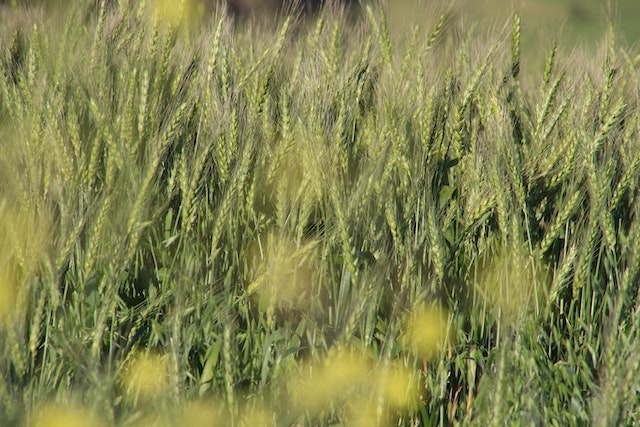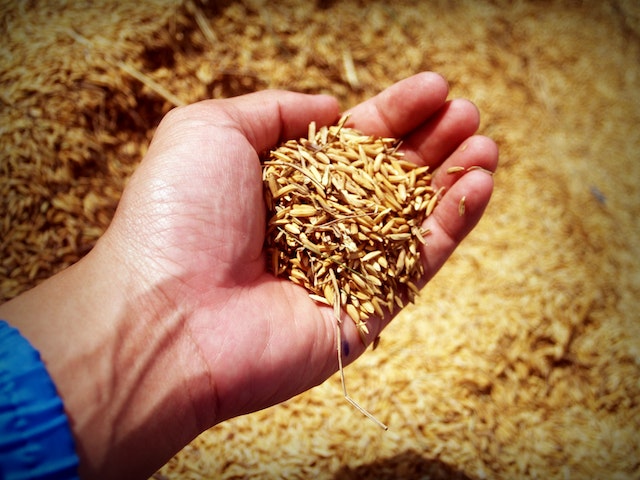Kharif ki fasal is also learned as monsoon crops that are grown during the monsoon season. Kharif ki fasal is cultivated at the beginning of the monsoon season and harvested at the end of the monsoon season. The word “kharif” has an Arabic origin and it started to be used in India with the advent of the Mughal Empire.
Kharif ki fasal depends on rainfall patterns. Here the “Timing” and “Quantity” are two essential factors that decide the results of kharif fasal. However, the main kharif fasal grown in India include rice, maize, bajra, jowar, tea, cotton, sugarcane, pulses, groundnut, etc.
We have included its meaning, features, growing, and harvesting season, vegetables and fruits which are grown in the monsoon season, and more about the kharif ki fasal.
Word Source:
When it comes to the origin of the word “Kharif”, this word has its origin in the Arabic language. But after that, the word came to be used in India with the ascent of the Mughal Empire in the Indian landmass and has been extensively used ever apart from this.
Literally, the word “Kharif” means “Autumn” in Arabic. In the Indian landmass, the cultivation of kharif fasal happens during the monsoon and the harvesting process happens at the end of Autumn, and also this nearness to the Autumn reap season is called the Kharif period.

Kharif Season:
The kharif season differs by crop and region. The process is starting at the earliest in May and ends at the latest in January. When it comes to Indian kharif fasal, the Kharif season is popularly considered to start in June and end in October.
Kharif ki fasal are basically cultivated at the beginning of the rains and are harvested at the end of the monsoon season between October and November.
Kharif crops are dependent on the amount of rainwater as well as its timing. But remember that too much, too little, or rains at the wrong time may apply trash to the whole year’s exertion.
Common Kharif Crops:
When you consider which fruits and vegetables are grown in kharif season, the prominently grown kharif crop is Rice. Apart from this, there are various kinds of cereals, fruits, seed plants, and vegetables grown in this season which are listed in a table be–
| Cereals | Fruits | Seed Plants | Vegetables |
| Rice Soybean Millets Bajra Jowar Maize | Sugarcane Orange Apple Almond Apricot Dates Coconut Figs Guava Litchi Plums Peaches Walnut | Sesame Arhar Black Gram Cowpea Cotton Green Gram Groundnut Moth Bean Moong Urad Bean Guar | Bottle Gourd Brinjal Chilli Ladyfingers Bitter Gourd Tinda Tomato Sponge Gourd French Bean Cucumber Musk Melon Pumpkin |
Features Of Kharif Fasal:
The prominent features of kharif ki fasal are as follows—
- Crops are grown in the rainy or monsoon season.
- The crops require hot or warm climatic conditions to grow.
- For the maturation process, it needs an abundance of rainwater, between 100 and 110 cm.
- The kharif ki fasal thrives on stoneless and alluvial soils.
- Shorter day lengths are needed in the process of flowering.
- The kharif fasal’s growth depends on the rainfall patterns.
- The crop is cultivated in the months of April and May and harvested in September and October.
- Major areas of kharif fasal cultivation are West Bengal, Assam, Tamil Nadu, Maharashtra, Andhra Pradesh, Kerala, Odisha coastal regions, etc.
What Is The Other Name Of Kharif Ki Fasal?
Kharif crops are also called monsoon crops as they are planted at the beginning of the monsoon season. The word “Kharif” is an Arabic word that means Autumn. The kharif ki fasal requires humidity and temperature and is cultivated in the rainy season but they are harvested in the autumn season.

Which Is Not Kharif Ki Fasal?
There are three cropping seasons in India including Kharif, Rabi, and Zaid crops based on cultivation time. You can discover which crops are not kharif by seeing that the crop is grown in a season other than the monsoon or rainy season.
Therefore, crops like wheat, barley, gram, peas, coriander, and mustered all are produced in the Rabi crop. These crops take more time to mature as compared to Kharif fasal.
Challenges Faced By Kharif Ki Fasal:
As the Kharif crops are grown in the rainy season, there are certain challenges that they have to face, and the challenges are as follows–
- Heavy rainfall patterns can lead to improving the growth of crops. Heavy water is required but too heavy water than needed could negatively affect the growth pattern.
- A hail shower can damage the crops. Heavy shower storms could make the crop bend or it can be permanently damaged which serves as a loss. There have been instances of shower storms at certain times that damaged half-grown or full-grown crops.
- By the way, the growth pattern can be affected by inappropriate weather which could lead to bigger or smaller grains or might affect the quality of the crop.
What Kharif Fasal Is Grown In Monsoon Season?
We have mentioned the five most important crops cultivated in the monsoon or kharif season—
Rice:
India is one of the world’s largest producers of Rice. This primary crop covers as much as the total one-third area of India and delivers to more than half of the Indian residents. It is cultivated in most of the Indian states. But there are three major rice producers in India including West Bengal, Punjab, and Uttar Pradesh.
India is the highest producer of rice which is considered a top crop to grow in the monsoon season. This crop is produced at an average temperature of 25 to 26 degrees Celsius and it requires a minimum of 100cm of rainfall. Therefore, Punjab and Haryana produce priced rice for export purposes.
Cotton:
Cotton is another kharif fasal. It is sometimes called a “cash crop” or a “fiber crop”. Cotton is a short, medium, and long staple type of kharif ki fasal. Cotton is a tropical and sub-tropical crop. Its seed is used as vegetable oil. In India, this crop is popularly known as “white gold”. Therefore, India has become in the third position in the production of cotton worldwide.
However, the temperature required to grow cotton is 21 to 30 degrees Celsius and a minimum rainfall is under 50 to 100cm. Therefore the major cotton producers include Gujarat, Maharashtra, Andhra Pradesh, Haryana, Rajasthan, Karnataka, Tamil Nadu, and Odisha. Gujrat is the highest of all according to the previous report. Here, the monsoon season delivers about 70% of the rainwater which is required for cotton production.
Sugarcane:
Sugarcane is grown in tropical and subtropical areas. It is an ancient crop of the Austronesian and Papuan people. Almost 80% of the sugar is produced from sugarcane. Therefore, the other products that are produced from sugarcane include molasses, rum, falernum, ethanol, etc.
However, the plant requires warm and humid weather and an agro-climatic region. Therefore, the optimum temperature of around 32 to 38 degrees Celcius is required for stem cutting whereas 14 to 16 degrees Celcius is needed for the ripening process. The sugarcane development regions are identified as North Western, North Central, North Eastern, Peninsular Zone, and Coastal Zones.
Tea:
India won the second position in the world by producing tea. However, we are also the largest consumer of tea and use around 30% of the global production output. Therefore, tea production is huge and in great demand. Usually, this crop is produced from tropical and subtropical regions in different parts of the country. The plantation’s activity is very dynamic in nature and can control heavy frost and snow.
Pulses:
Here, pulses mean crops like black gram and green gram which are the most important leading crops of India in monsoon. Tough late monsoon reduces the speed of Kharif crops broadcasting and the production may be delayed and damaged due to the monsoon. However, the major growing states include Maharastra, Karnataka, and Madhya Pradesh.
Conclusion:
In this article, we have explained the complete information about kharif ki fasal in detail. After reading this article, you can understand which season is appropriate for planting the kharif fasal. And you can also get to know all the crops’ names which are sown under kharif fasals. However, if you have any inquiries related to this topic, then you can ask by leaving a little message in the comment section.
